| Shortcuts to different sections | ||||||
| Group 1 | Substituted clichés | EIM Home | Evidence | Research | Plating-Group-2 | Plating-Group-3 |
The different face values fall into three groups.
I started with the assumption that the sheets, or at least panes, were numbered sequentially from top-left to bottom-right, then cut into strips.
However my analysis of the numbers on stamps having the same flaws forces me to abandon this assumption.
Whilst each strip appears to be consistently numbered in sequence, the strips themselves are not consistently numbered according to the row within the pane.
I am now assuming that at least some of the sheets were cut into strips before being numbered. This applies to all values.
They must already have produced over 400 5/- sheets, so there must have been a good reason for it.
Though I cannot rely on the control numbers to indicate the row of a stamp and there are no vertical pairs with stamps having control numbers,
there are remainders that can help.
There are tête-bêche pairs of 1/- stamps and blocks of 1/- and 1/6 stamps.
In addition there are remainders with wide margins at top or bottom to show they are from the top or bottom of a sheet, or at least a pane.
Unfortunately I have as yet no images of vertical pairs of 4/- remainders.
Here is a break-down of Group 1. (4/-) scans by quantities and column.
| Column | 1 | 2 | 3 | 4 | 5 | 6 | 7 | 8 | 9 | 0 | Total |
|---|---|---|---|---|---|---|---|---|---|---|---|
| Qty | 3 | 0 | 1 | 2 | 4 | 3 | 2 | 2 | 5 | 3 | 24 |
Though I have 5 images in column 5, strangely 4 of them have extremely similar flaws !
There may be a reason for that. It has become apparent that Substituted clichés exist on at least the 5/- and 1/6d English & Irish values. The 4/- value appears to have been around for a lot longer,
and is therefore likely to have had a lot of such substitutions, especially on outer edges which may have a lot of examples from the same sources.

D12463 to D12465 courtesy of Corinphila.

Here is a new image that should help, now with an extra 3 to add, the next four are a reconstruction courtesy of Steve Lawrie, the last (courtesy of capital-collectables) I have added digitally.
There are very few examples to work with, and this should help a lot. Plating is unlikely to get far without substantial blocks of remainders. (images welcome)
At the moment I have 26 useful scans of different remainders and 29 with control numbers. With the 1/-, 2/6d and especially with the 5/-, it is easy to see
that there were two different panes because of differences in the figures of the values. The figure '4' on these is remarkably consistent, though what
follows it can vary. At the moment I am inclined to think that either there was only one pane, or a second pane was copied from the first.
I will show all of the "useful remainder scans as they may be helpful, though the positions allocated will be arbitrary unless matching another with a control number,
or having wide selvedge. I really need more images though. On the strip above, D12466 is very similar to D12486 and a remainder "Rem-15".
These three appear to be a match.
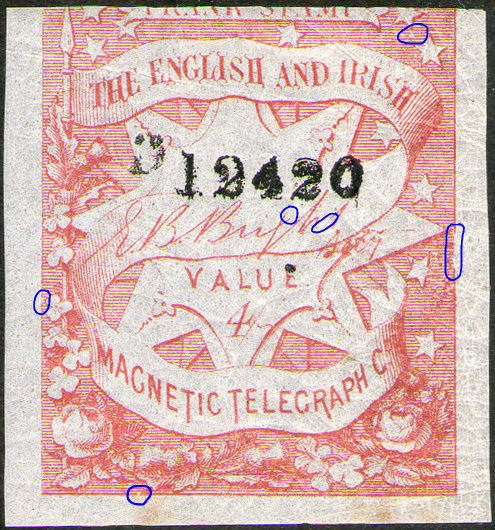
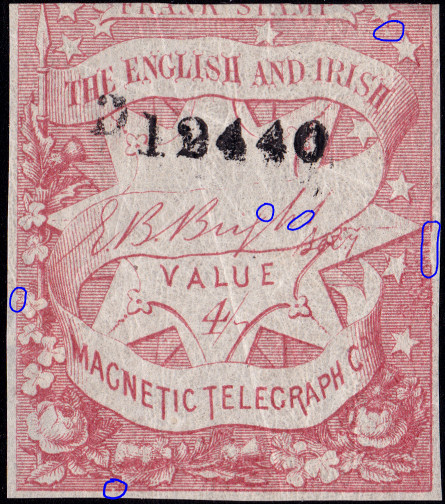

D12420, D12440 and a remainder "Rem-5"
D12481 also appears to be a match for D12491.
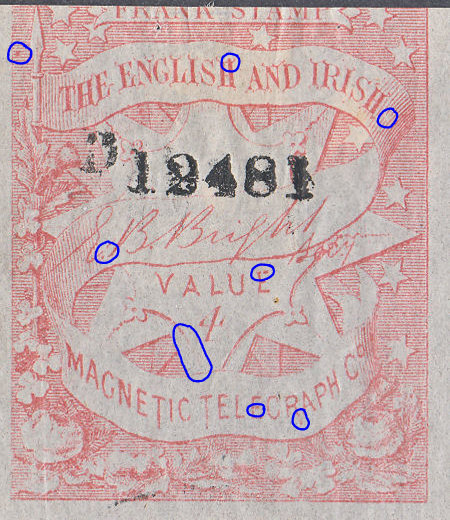
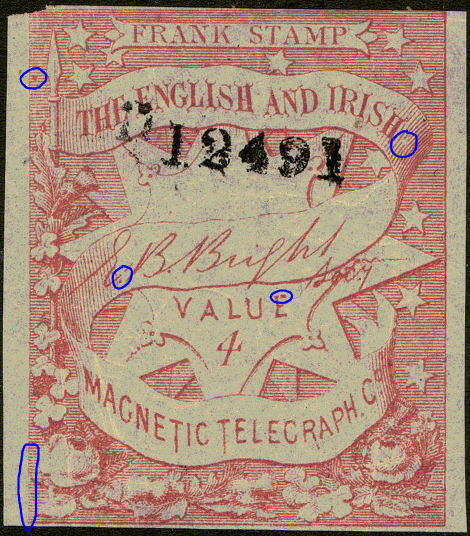
The figure '4' also looks very similar. Morley says that only the 1/- and 4/- were printed with only 50 different types.
He also only lists the 1/- as having tête-bêche pairs, that leaves it open to question as to whether the 4/- sheets had one, or two panes of 50.
I cannot easily prove that he was right, but I can attempt to disprove him. The above pair do not disprove him.
Neither do these 2 below:
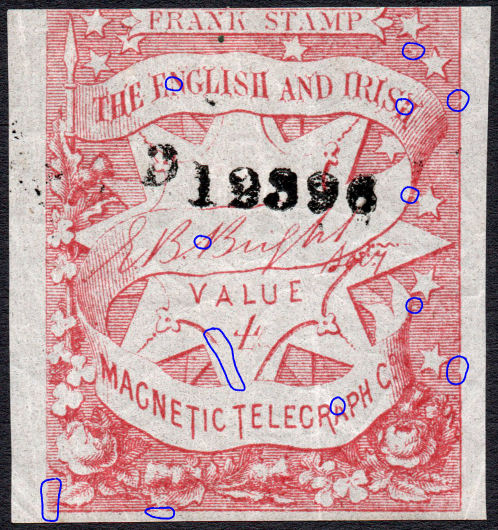
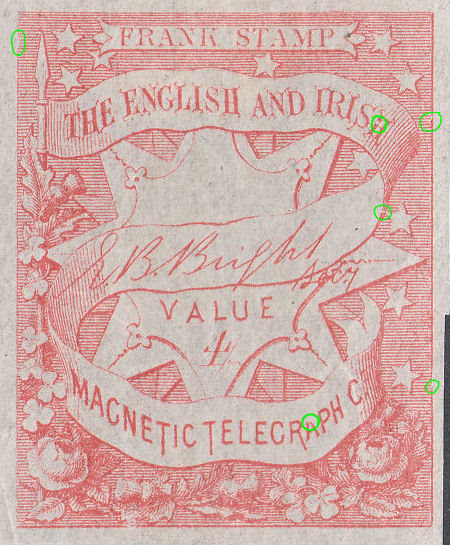
Again matching flaws and '4/-' on D12396 and "Rem-13". "Rem-4" and "Rem-9" are similar
Another example of a serialised stamp matching remainders.
One remainder is very similar, the other, not so much.
And another.
I now have 3 remainders very similar to D12474, the way the value is written looks very similar though.
There are differences, but every example of these may have imperfections, see "Rem-7", "Rem-3" and "Rem-11"
And another matching pair.
Two remainders from the top of a pane and a bottom-right corner:
I have three other examples of matching pairs of remainders.
The left pair demonstrates that even poor examples can provide useful information.
Three different remainders looking for a home.
And two more remainders, courtesy of Corinphila, looking for a home, plus the last from ibredguy.co.uk on eBay.
Some distinctive flaws at the top, but top flaws are often missing from the numbered examples.
I now know that there was at least 2 panes on the sheet (probably not more than 2). D12474 and 3 remainders split into two groups.
Comparing D12474 with the remainders at 4C also suggests that there were probably 2 panes of 50, but with the values written the same way in the two panes.
It is possible that the differences are different states due to wear or repair, I will put what seems to be the later state at the bottom. I would expect remainders to be late.
Avoiding clashes actually places a lot of constraints on possible arrangements.
The 4/- value was used for longer than the others. It is possible that a fresh stone was prepared at some point.
A possible, though statistically unlikely arrangement of the 4/- value.
Largely populated by remainders in random positions, but it's a start. It provides constraints to guide future additions.
For what it's worth, this is 41% "complete", but locations are mostly guestimates.
| Rem-1. | D12373 Rem-6. |
D12379 | |||||||
|---|---|---|---|---|---|---|---|---|---|
| D12411 | Rem-20. | Rem-22. | Rem-17. | D12420 D12440 |
|||||
| D12481 | Rem-21. | D12485 | Rem-19. | ||||||
| D12463 |
D12464 D12474 Rem-7 |
D12465 |
D12466 Rem-15 |
D12467 |
D12468 |
D12469 | D12470 | ||
| D12415 Rem-17. |
D12396 Rem-13. |
D12397 |
| Rem-2. | Rem-12. | Rem-8. Rem-14. |
D12388 | D12389 | |||||
|---|---|---|---|---|---|---|---|---|---|
| D12424 | Rem-18. | Rem-5. | |||||||
| D12491 | Rem-10. | ||||||||
| Rem-3. Rem-11. |
D12486 | D12489 | |||||||
| Rem-16. | D12445 D12455 |
Rem-4 Rem-9 |
D12459 | Rem-0E. |
I have colour-coded stamps on the same strip or matching remainders. Some strips may overlap.
It is at least a starting point, giving something to build on.
Ignoring the used example, 40889, all of these are from only two sheets. That makes for a fairly high probability that new finds will belong to a new position.
D12389 looks the same as D12379 as far as the marked flaws and value are concerned, but I have put them on opposite panes for now since there is only
a 1 in 3 chance of them being from the same pane even if strips from the two sheets were mixed together before numbering.
One of these items (D12389) is of a stamp that can be seen here - BT Archive.
| Breakdown of flaws by column: | |||||||||
| Column-1 | Column-2 | Column-3 | Column-4 | Column-5 | Column-6 | Column-7 | Column-8 | Column-9 | Column-0 |
I have 3 scans from Group 1, column 1. Looking at them:
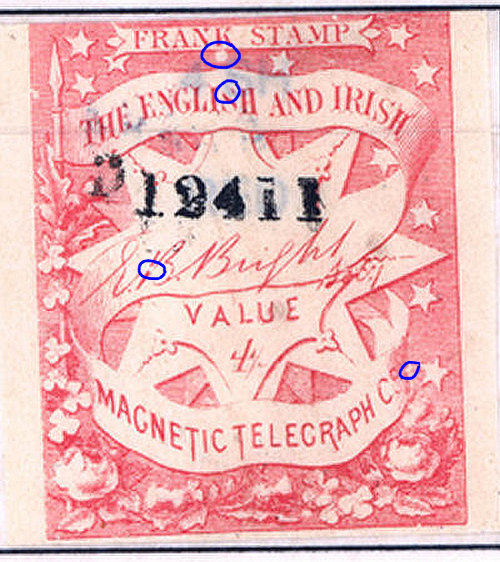 |
 |
 |
| Group 2, Column 1, on D12411. Parking at - 1B-pane 1. |
Group 2, Column 1, on D12481. D12485 is on the same strip. Parking at - 1C-pane 1. |
Group 2, Column 1, on D12491. This is very similar to D12481 at 1C pane 1. Parking at - 1C-pane 2. |
I have NO scans from Group 1, column 2 as yet, but have parked remainders. looking at them:
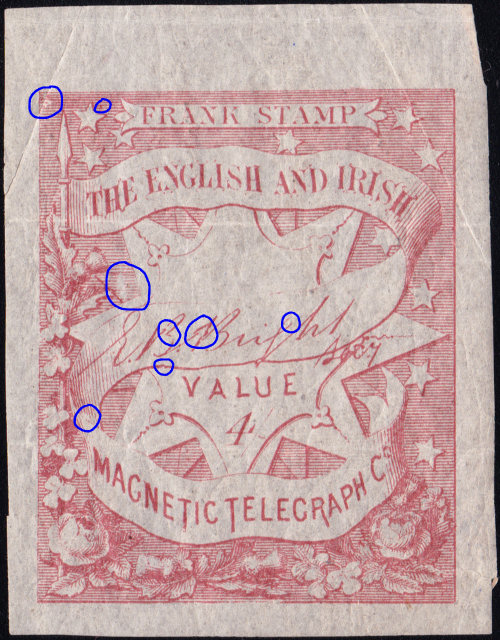 |
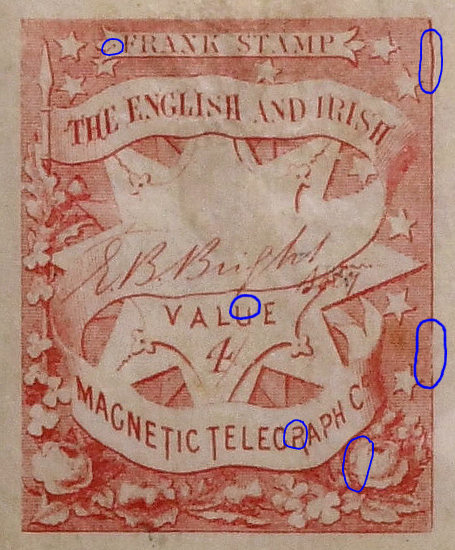 |
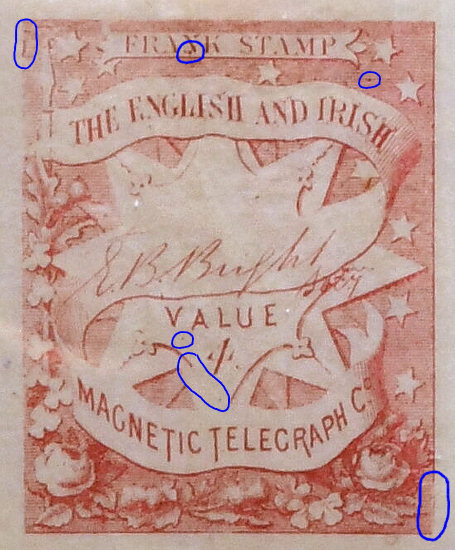 |
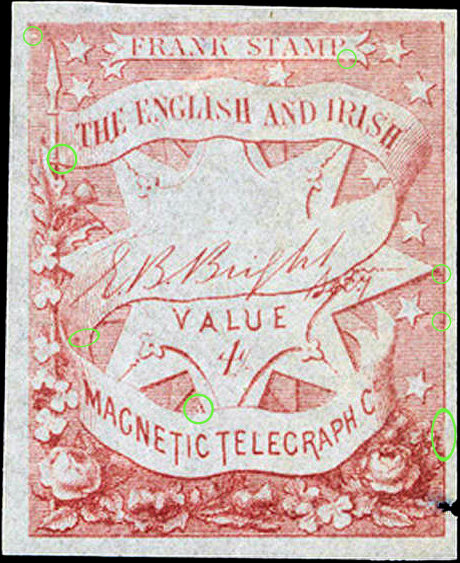 |
| Group 2, Column 2?, on a remainder from the top of a pane. Parking arbitrarily at - 2A-pane 2. |
Group 2, Column 2?, on a remainder. Parking arbitrarily at - 2B-pane 1. |
Group 2, Column 2?, on a remainder. Parking arbitrarily at - 2C-pane 1. |
Group 2, Column 2?, on a remainder. Parking arbitrarily at - 2E-pane 2. |
I have 2 scans from Group 1, column 3 plus remainders. Looking at them:
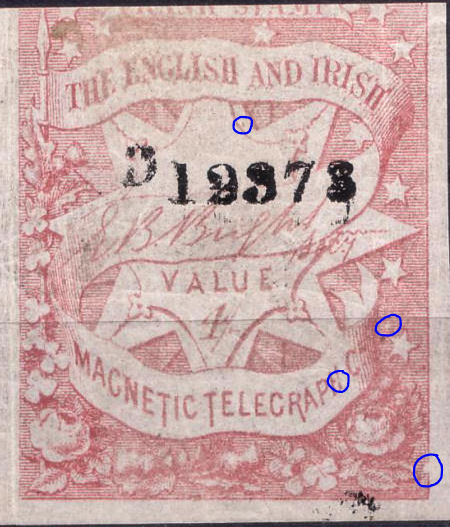 |
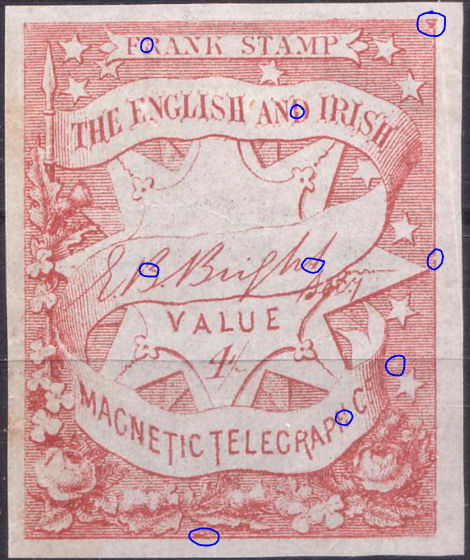 |
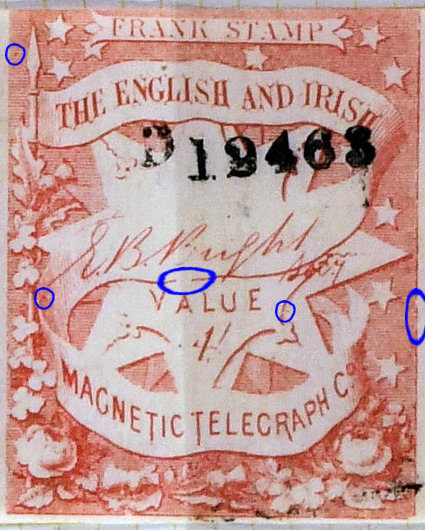 |
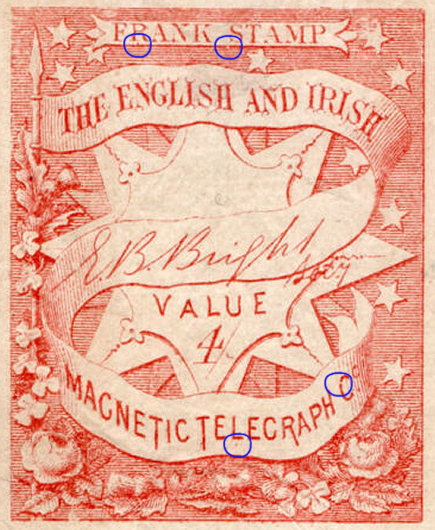 |
| Group 2, Column 3, on D12373.and a remainder. Parking at - 3A-pane 1. Two remainders are similar. |
Group 2, Column 3, on 2 remainders. Similar to pane-1 but additional flaws at the top. Parking at - 3A-pane 2. |
Group 2, Column 3, on D12463. D12463 is on a long strip to D12470. Parking at - 3D-pane 1. |
Group 2, Column 3, on a remainder. I have no idea where this goes. Parking at - 3B-pane 1. |
I have 3 scans from Group 1, column 4. Looking at them:
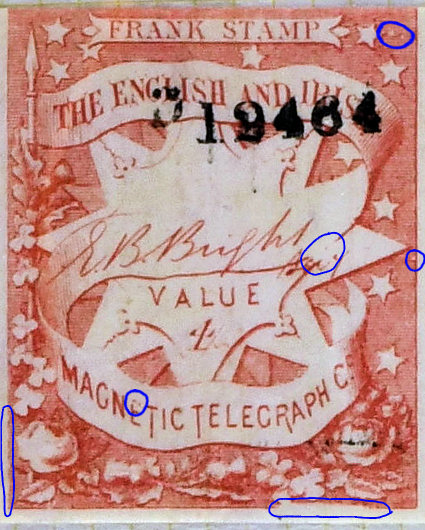 |
 |
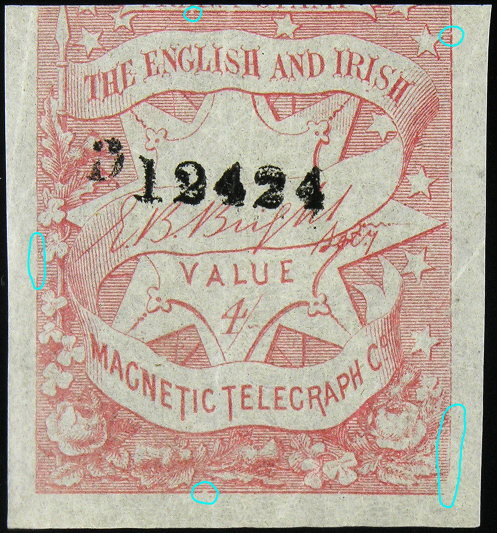 |
| Group 2, Column 4, on D12464, D12474 and a remainder. D12464 is on the long strip D12463-70. Placing at - 4D-pane 1. |
Group 2, Column 4, on two remainders. Like the last, but missing the major flaw after "Bright" Parking at - 4D-pane 2. |
Group 2, Column 4, on D12424. Parking arbitrarily at - 4B-pane 2. |
I have 5 scans from Group 1, column 5. Looking at them:
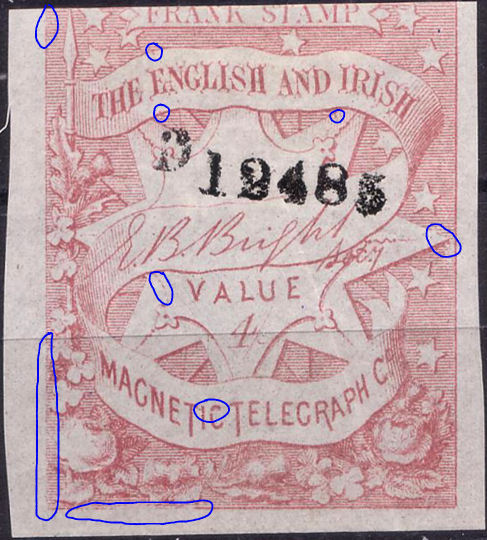 |
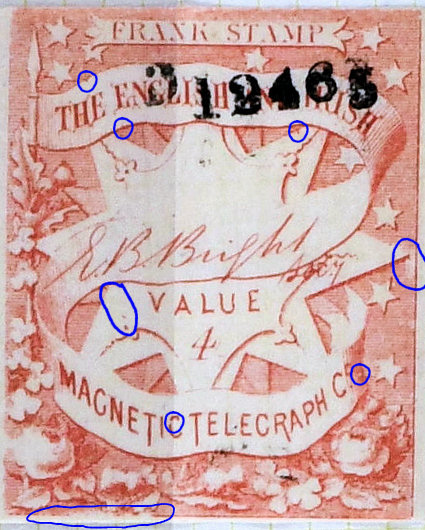 |
 |
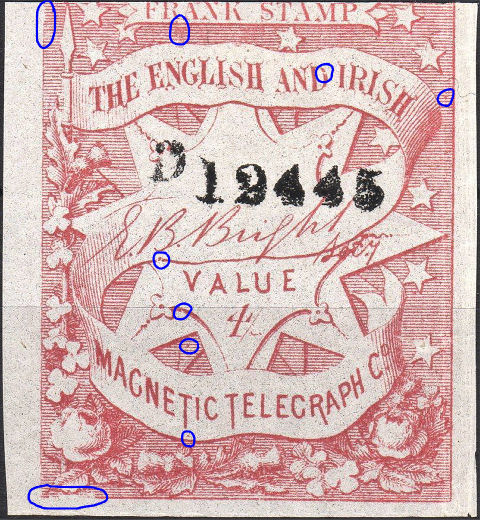 |
| Group 2, Column 5, on D12485 and a remainder. D12485 is on the same strip as D12481, so placing D12485 at 5C-pane 1.. Placing the remainder at - 5C-pane 2. |
Group 2, Column 5, on D12465. D12465 is on the long strip D12463-70. Parking at - 5D-pane 1. |
Group 2, Column 5, on D12415 and a remainder. Parking them arbitrarily at - 5E-pane 1. |
Group 2, Column 5, on D12445 and D12455. Similar to the last but some differences. Parking them at - 5E-pane 2. |
I have 3 scans from Group 1, column 6. Looking at them:
 |
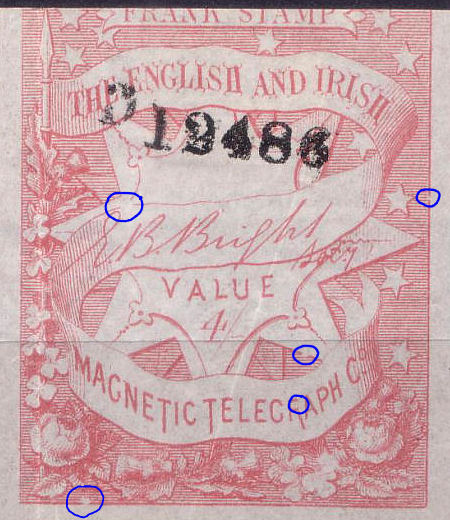 |
 |
 |
| Group 2, Column 6, on D12466 and a remainder. D12466 is on the long strip as D12463-70, so placing them at 6D-pane 1.. |
Group 2, Column 6, on D12486. Very similar to the last, but different. Placing at - 6D-pane 2. |
Group 2, Column 6, on D12396 and a remainder. Parking them arbitrarily at - 6E-pane 1. |
Group 2, Column 6, on two remainders. Similar to the last but with differences. Parking them at - 6E-pane 2. |
I have 2 scans from Group 1, column 7. Looking at them:
 |
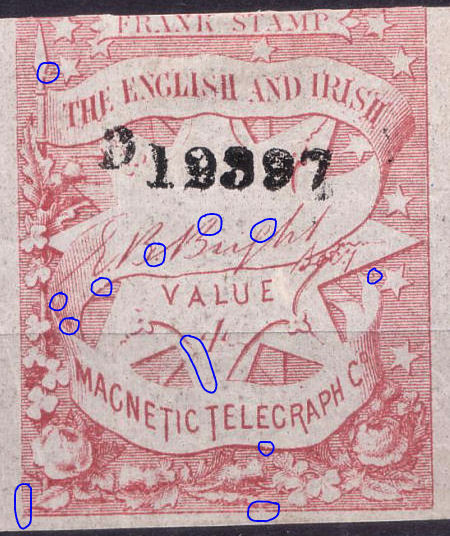 |
 |
| Group 2, Column 7, on D12467. D12467 is on the long strip as D12463-70, so placing it at 7D-pane 1.. |
Group 2, Column 7, on D12397. This is on the same strip as D12396, so Placing it at - 7E-pane 1. |
Group 2, Column 7, on two similar remainders. I have no idea where these two go, so for now - Parking them arbitrarily at - 7B-panes 1 and 2. |
I have 2 scans from Group 1, column 8. Looking at them:
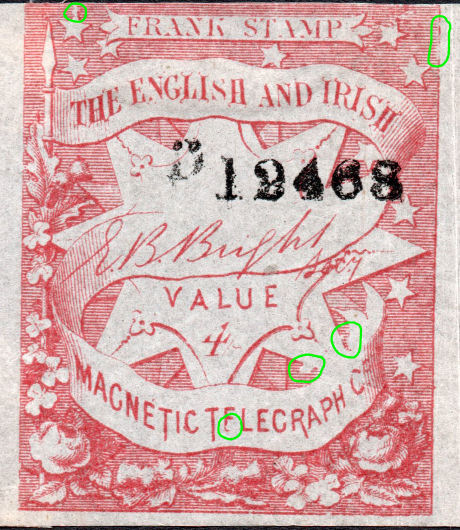 |
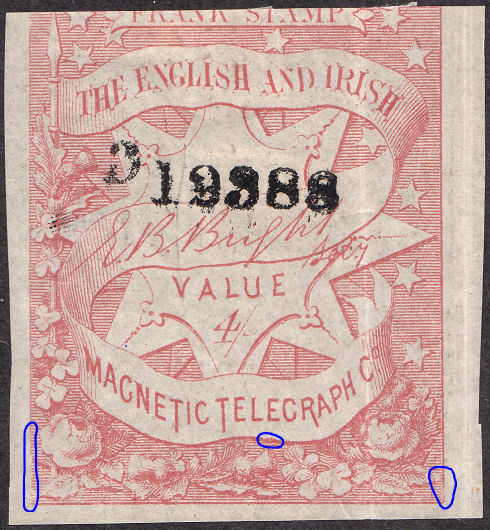 |
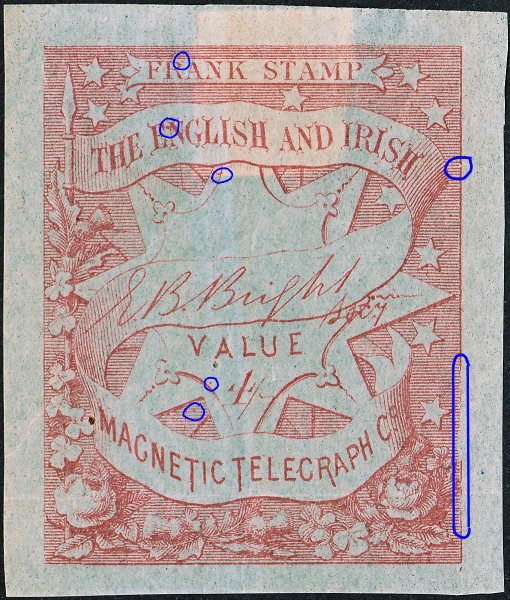 |
| Group 2, Column 7, on D12468. D12468 is on the long strip as D12463-70, so placing it at 8D-pane 1.. |
Group 2, Column 7, on D12388. D12388 is on the same strip as D12389 which is placed at 9A-pane 2 so Placing it at - 8A-pane 2. |
Group 2, Column 7, on a remainder. I have no idea where this goes, so for now - Parking it arbitrarily at - 8C-pane 1. |
I have 4 scans from Group 1, column 9. Looking at them:
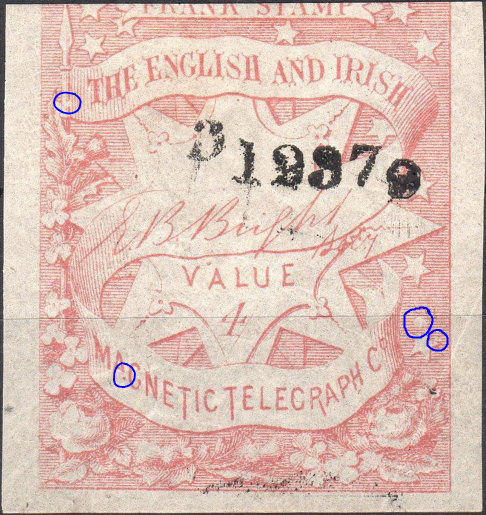 |
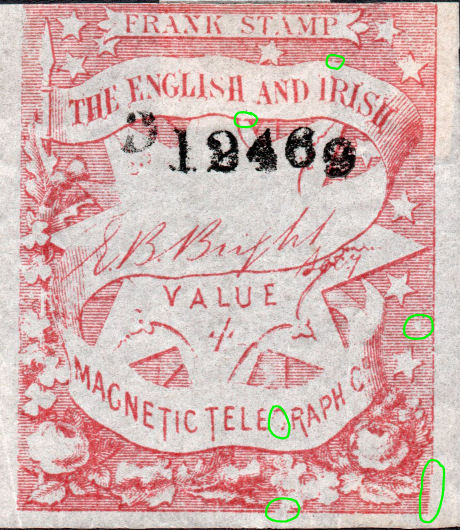 |
| Group 2, Column 7, on D12379. D12379 is on the same strip as D12473, so placing it at 9A-pane 1.. D12389 is placed at 9A-pane 2.. |
Group 2, Column 7, on D12469. D12469 is on the long strip as D12463-70, so placing it at 9D-pane 1.. |
 |
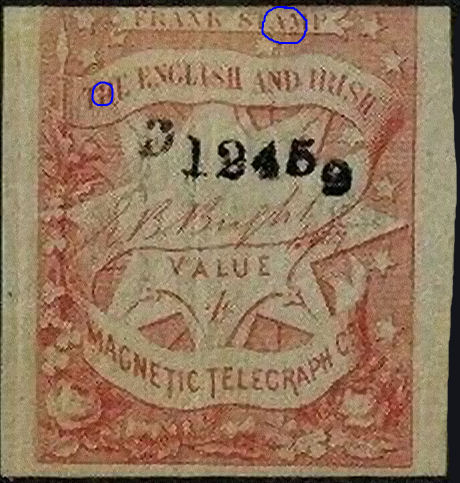 |
| Group 2, Column 7, on D12489. D12489 is very similar to D12469 on the long strip as D12463-70, so Placing it at - 9D-pane 2. |
Group 2, Column 7, on D12459. This is on the same strip as D12455 so Placing it at - 9E-pane 1. |
I have 3 scans from Group 1, column 0. Looking at them:
 |
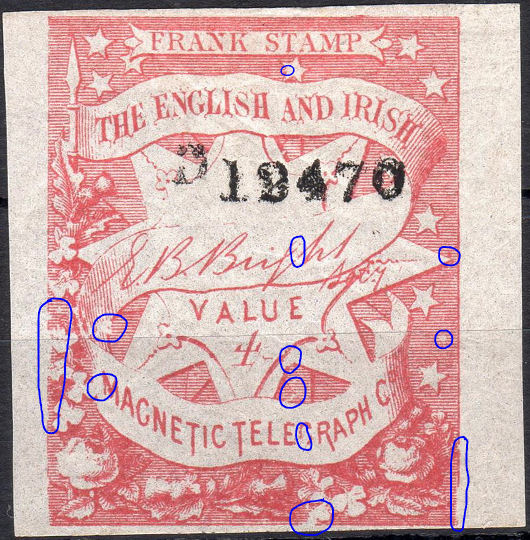 |
 |
| Group 2, Column 7, on D12420, D12440 and a remainder. D12420 is on the same strip as D12411 which is placed at 1B-pane 1 so Placing D12420 & D12440 at - 0B-pane 1 and the remainder at 0B-pane 2 |
Group 2, Column 7, on D12470. D12470 is on the long strip as D12463-70, so placing it at 0D-pane 1.. |
Group 2, Column 7, on a remainder. I have no idea where this goes, so for now - Parking it arbitrarily at - 8C-pane 1. |
Further scans invited.
Vertical pairs of remainders especially welcome.
Last updated 4th. August 2025
©Copyright Steve Panting 2012/13/14/15/16/17/18/19/20/21/22/23/24/25 except where stated.
Permission is hereby granted to copy material for which the copyright is owned by myself, on condition that any data is not altered and this website is given credit.